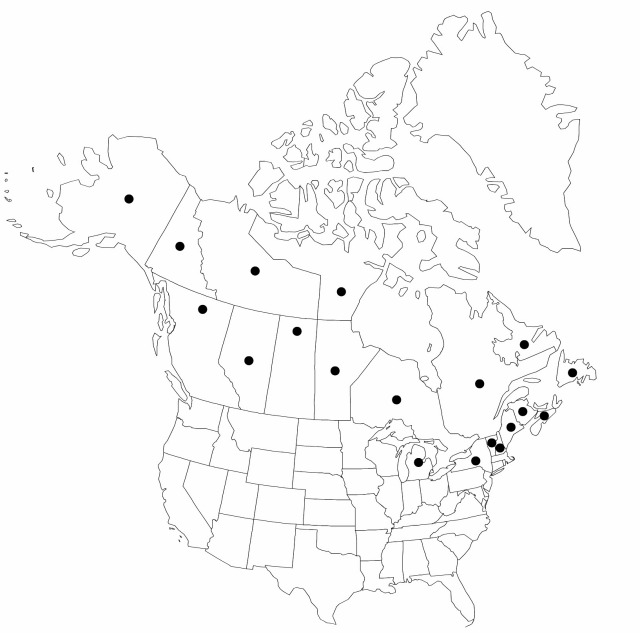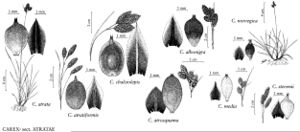Carex atratiformis
Bull. Torrey Bot. Club 22: 222. 1895.
Plants loosely cespitose. Culms 20–70 cm, distally finely scabrous. Leaves 2.5–5 mm wide. Inflorescences: proximal bracts shorter than or exceeding inflorescences; spikes distinct, spreading or the proximal pendent and often separate, elongate, 10–25 × 5–8 mm; lateral 3–6 spikes pistillate, long-pendunculate; terminal spike gynecandrous. Pistillate scales light to dark-brown with hyaline margins, lanceolate, longer than and as broad as perigynia, midvein same color as body, inconspicuous or lighter in color, conspicuous, raised, prominent, sometimes short-mucronate. Perigynia ascending, yellow-brown or chestnut, veinless, ovate or elliptic, 2.5–3 × 1.5–1.75 mm, apex abruptly beaked, distally papillose; beak 0.4–0.5 mm, bidentate, smooth. Achenes filling proximal 1/2 or less of perigynia.
Phenology: Fruiting Jun–Aug.
Habitat: Forest margins, open woodlands, calcareous ledges, stream banks, lakeshores, wet cliffs, high elevation seeps
Elevation: 10–1500 m
Distribution

Alta., B.C., Man., N.B., Nfld. and Labr., N.W.T., N.S., Ont., Que., Sask., Yukon, Alaska, Maine, Mich., N.H., N.Y., Vt.
Discussion
Carex raymondii is a minor variant consisting of specimens with yellow-brown perigynia and light brown scales with midribs lighter in color than the bodies of the scales. The hybrid taxon Carex ×quirponensis Fernald (= C. atratiformis × C. norvegica) is known from Newfoundland and Quebec.
Selected References
None.
Lower Taxa
"shortened" is not a number.
